
Georges Prosper Remi, known by the pen name Hergé, from the French pronunciation of his reversed initials RG, was a Belgian comic strip artist. He is best known for creating The Adventures of Tintin, the series of comic albums which are considered one of the most popular European comics of the 20th century. He was also responsible for two other well-known series, Quick & Flupke (1930–1940) and The Adventures of Jo, Zette and Jocko (1936–1957). His works were executed in his distinctive ligne claire drawing style.
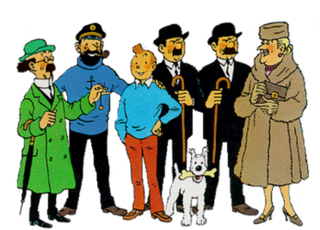
The Adventures of Tintin is a series of 24 comic albums created by Belgian cartoonist Georges Remi, who wrote under the pen name Hergé. The series was one of the most popular European comics of the 20th century. By 2007, a century after Hergé's birth in 1907, Tintin had been published in more than 70 languages with sales of more than 200 million copies, and had been adapted for radio, television, theatre, and film.

Cigars of the Pharaoh is the fourth volume of The Adventures of Tintin, the series of comic albums by Belgian cartoonist Hergé. Commissioned by the conservative Belgian newspaper Le Vingtième Siècle for its children's supplement Le Petit Vingtième, it was serialised weekly from December 1932 to February 1934. The story tells of young Belgian reporter Tintin and his dog Snowy, who are travelling in Egypt when they discover a pharaoh's tomb with dead Egyptologists and boxes of cigars. Pursuing the mystery of the cigars, Tintin and Snowy travel across Southern Arabia and India, and reveal the secrets of an international drug smuggling enterprise.

André Franquin was an influential Belgian comics artist, whose best-known creations are Gaston and Marsupilami. He also produced the Spirou et Fantasio comic strip from 1946 to 1968, a period seen by many as the series' golden age.

Jean Van Hamme is a Belgian novelist and comic book writer. He has written scripts for a number of Belgian/French comic series, including Histoire sans héros, Thorgal, XIII and Largo Winch.
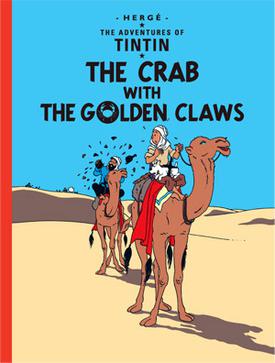
The Crab with the Golden Claws is the ninth volume of The Adventures of Tintin, the comics series by Belgian cartoonist Hergé. The story was serialised weekly in Le Soir Jeunesse, the children's supplement to Le Soir, Belgium's leading francophone newspaper, from October 1940 to October 1941 amidst the German occupation of Belgium during World War II. Partway through serialisation, Le Soir Jeunesse was cancelled and the story began to be serialised daily in the pages of Le Soir. The story tells of young Belgian reporter Tintin and his dog Snowy, who travel to Morocco to pursue the international opium smugglers. The story marks the first appearance of main character Captain Haddock.

Red Rackham's Treasure is the twelfth volume of The Adventures of Tintin, the comics series by Belgian cartoonist Hergé. The story was serialised daily in Le Soir, Belgium's leading francophone newspaper, from February to September 1943 amidst the German occupation of Belgium during World War II. Completing an arc begun in The Secret of the Unicorn, the story tells of young reporter Tintin and his friend Captain Haddock as they launch an expedition to the Caribbean to locate the treasure of the pirate Red Rackham.

Tintin and the Golden Fleece is a film first released in France on 6 December 1961. Featuring characters from The Adventures of Tintin comic book series written and drawn by the Belgian writer-artist Hergé, it was a live-action film with actors made-up to look like the characters and featured an original storyline not based on any of the books.
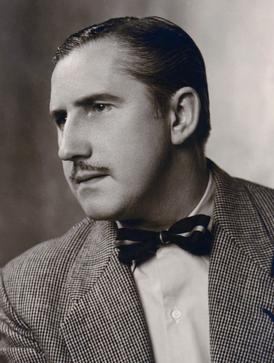
Edgard Félix Pierre Jacobs, better known under his pen name Edgar P. Jacobs, was a Belgian comic book creator, born in Brussels, Belgium. He was one of the founding fathers of the Franco-Belgian comics movement, through his collaborations with Hergé and the graphic novel series that made him famous, Blake and Mortimer.

Tintin and the Blue Oranges is a 1964 Franco-Spanish film directed by Philippe Condroyer and starring Jean-Pierre Talbot as Tintin. It was the second live-action film, with an original story based on characters from the comic book series The Adventures of Tintin, written and drawn by the Belgian artist Hergé. The accompanying book version is in photos and text rather than the usual comic-book style.
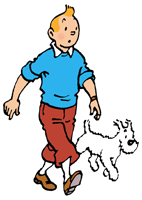
Tintin is the titular protagonist of The Adventures of Tintin, the comic series by Belgian cartoonist Hergé. The character was created in 1929 and introduced in Le Petit Vingtième, a weekly youth supplement to the Belgian newspaper Le Vingtième Siècle. Appearing as a young man with a round face and quiff hairstyle, Tintin is depicted as a precocious, multitalented reporter who travels the world with his dog Snowy.
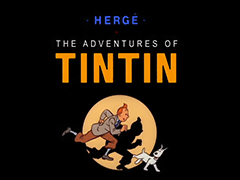
The Adventures of Tintin is an animated television series co-produced and animated by French animation studio Ellipse Programme and Canadian studio Nelvana Limited. The series is based on the comic book series of the same name by Belgian cartoonist Hergé. 39 half-hour episodes were produced over the course of three seasons, originally airing in France, Canada, and the United States between 1991 and 1992.

Michel Régnier, best known by his pseudonym Greg, was a Belgian cartoonist best known for Achille Talon, and later became editor of Tintin magazine.

Le Petit Vingtième was the weekly youth supplement to the Belgian newspaper Le Vingtième Siècle from 1928 to 1940. The comics series The Adventures of Tintin first appeared in its pages.

Numa Sadoul (born 7 May 1947, Brazzaville, French Equatorial Africa is a French writer, actor, and director, who has been a resident of France since 1966.

Paul Cuvelier was a Belgian comics artist best known for the comic series Corentin, published by Le Lombard, which first appeared in the first issue of Tintin magazine.
Jacques Laudy was a Belgian comics artist who contributed to the early issues of the weekly Tintin magazine.
The Studios Hergé were, between 1950 and 1986, a SARL company consisting of Belgian cartoonist Hergé and his collaborators, who assisted him with the creation of The Adventures of Tintin and derived products. Over the years, the studios had between 12 and 50 employees, including some prestigious artists like Jacques Martin, Bob de Moor and Roger Leloup.
















